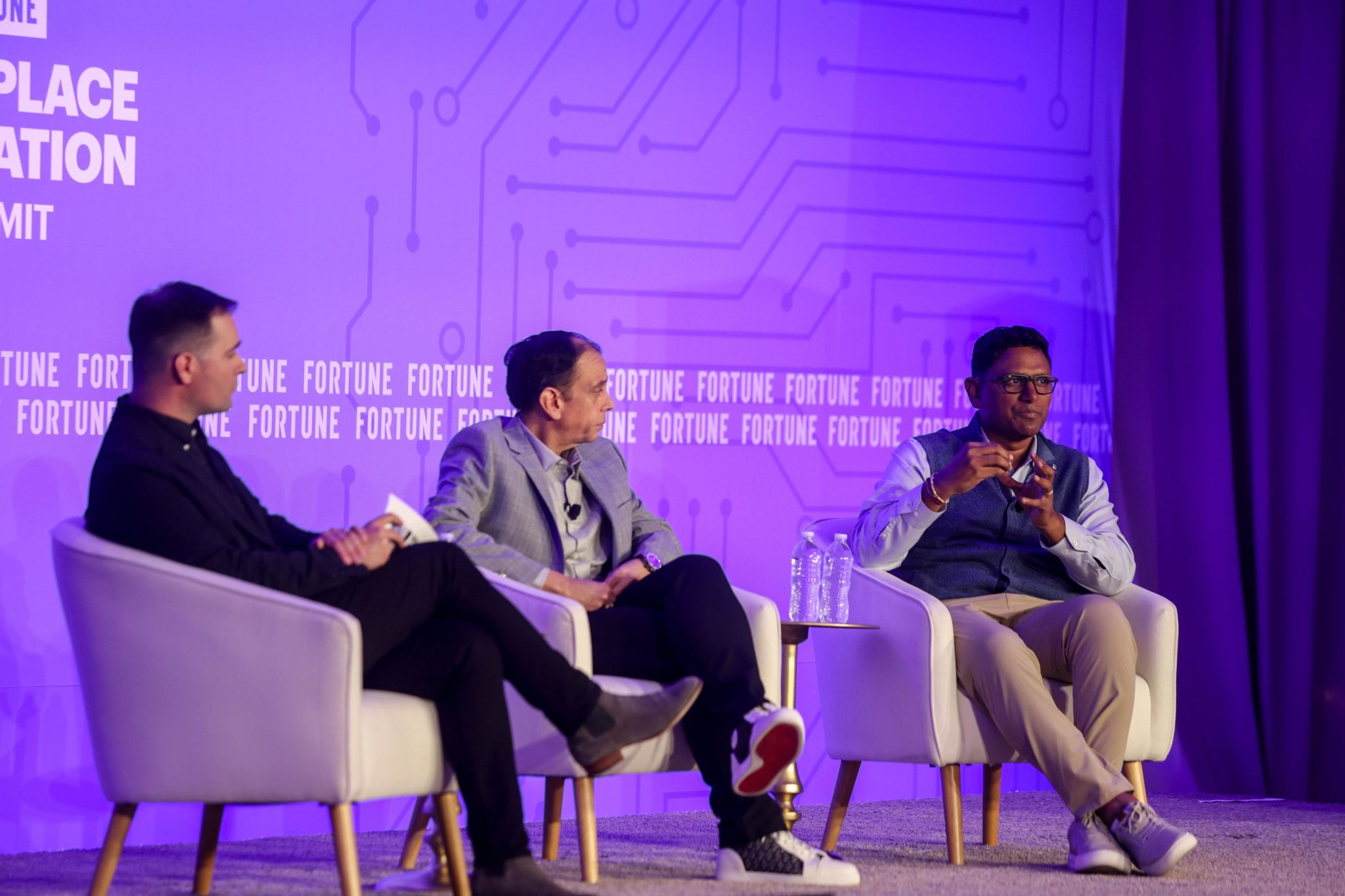Good morning. AI-powered digital labor is fundamentally changing the way work is accomplished.
“We have jobs today within our own organization that didn’t exist 60 days ago,” Andy Valenzuela, EVP and COO of employee success at Salesforce, said during the Fortune Workplace Innovation Summit last week.
The future of work is increasingly collaborative and dynamic, and will be augmented by tools like AI agents—autonomous programs that perform tasks on behalf of users, Valenzuela explained. That requires companies to rethink existing jobs, invest in talent, and maintain organizational flexibility to accommodate agents, he said.
In four years, automation for frontline workers has ramped up, said Mahe Bayireddi, CEO and cofounder of Phenom, an HR technology company, during the session. The use of automation among knowledge workers is catching up, he added. Change management may be a factor for many companies as they structure ways to deploy AI agents.
However, many AI agents are already on the job. PwC’s May survey of 300 senior executives found that 88% say their team or business function plans to increase AI-related budgets in the next 12 months due to agentic AI. Likewise, 79% say AI agents already are being adopted in their companies and, of those, two-thirds report that they’re increasing productivity.
As companies determine the best use cases to integrate AI agents into their operations, some leaders are grappling with a fundamental question: What should be automated, and what still requires a human touch?
Bayireddi offered this analogy: “Agents are like ants.” Just as ants efficiently handle repetitive, essential tasks, AI agents can take on the routine work that often drains employee energy and engagement.
You have to continually evaluate where AI agents can create efficiencies and allow human talent to focus on higher-value opportunities, Valenzuela said. He offered the example of Salesforce launching a pay planning system: “We actually built an agent that did the entire enablement for those 11,000 people,” he said. Every manager could engage with this agent to learn the new system. Instead of his team focusing on the enablement piece, they could focus on more strategic work.
The primary reason for deploying AI agents is to achieve autonomy, Bayireddi said. He explained three types to consider: operational autonomy (automating specific tasks), functional autonomy (automating processes within business units), and hierarchical autonomy (how agents fit within organizational power structures). Deploying agents among knowledge workers requires careful attention to hierarchy and decision-making authority, as organizational structure greatly influences where and how agents should operate, Bayireddi said.
At Salesforce, they’re building scorecards to balance workloads between agents and humans, Valenzuela said. Managers must learn how to manage both agents and humans, he said.
However, deploying teams of agents in very complex, revenue-driving, regulated industries can be concerning for some. It’s about balancing innovation with compliance, ensuring agents are integrated thoughtfully into existing structures, and maintaining trust through transparency and strong governance, Bayireddi said.
Sheryl Estrada
sheryl.estrada@fortune.com
This story was originally featured on Fortune.com

